The Most Colorful Cities in the World
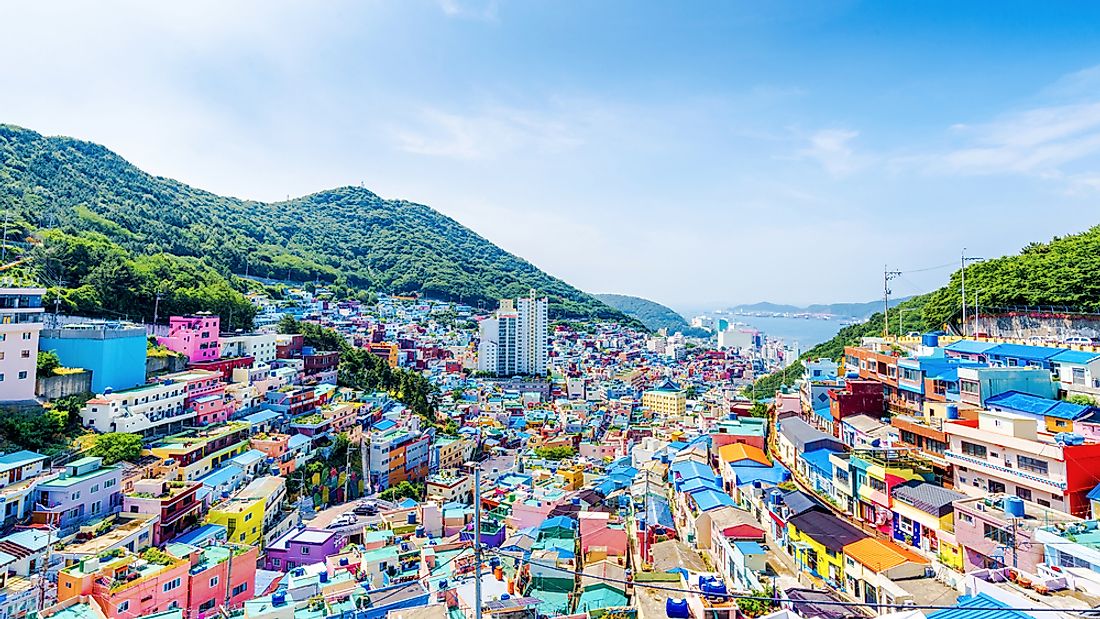
The beauty and colorfulness of a city is a factor that is determined by a number of things such as the landscape, the style of architecture, the people, the cleanliness, and many other factors. Aside from all these, the colorfulness of a city is also determined by the colors painted on the streets and buildings. These colors can be the entire spectrum of the rainbow or just an overabundance of a single color. Some of the most colorful cities in the world are dominated by colors such as turquoise, golden yellow, lavender, and others.
15. Zalipie, Poland
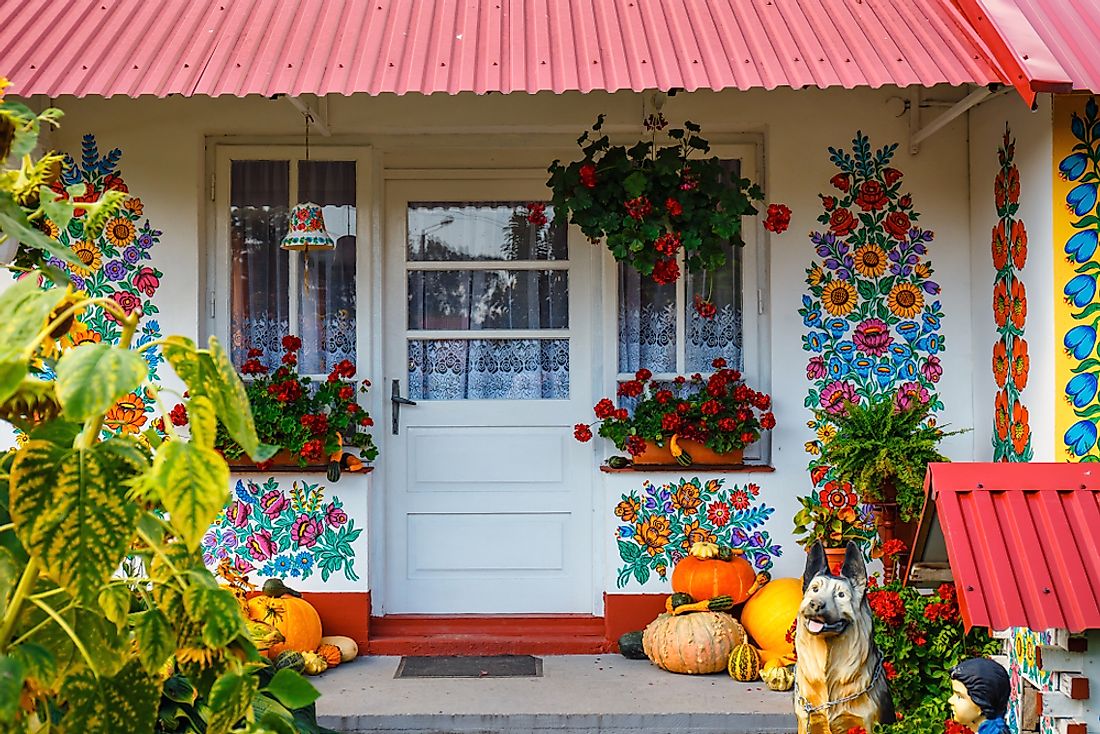
Also known as the “The Painted Village,” Zalipie is a colorful village located in Poland’s Gmina Olesno. Nearly all the houses in the village are painted in unique colors and intricate floral designs regardless of the material used in the building. While it is unclear where the tradition came from, one of the theories is that the paint was intended to cover black soot from chimneys. This tradition went on even after the advent of cleaner cooking techniques since it was already ingrained in the people. In fact, one of the painted houses is now a museum that showcases the local culture.
14. Burano, Italy
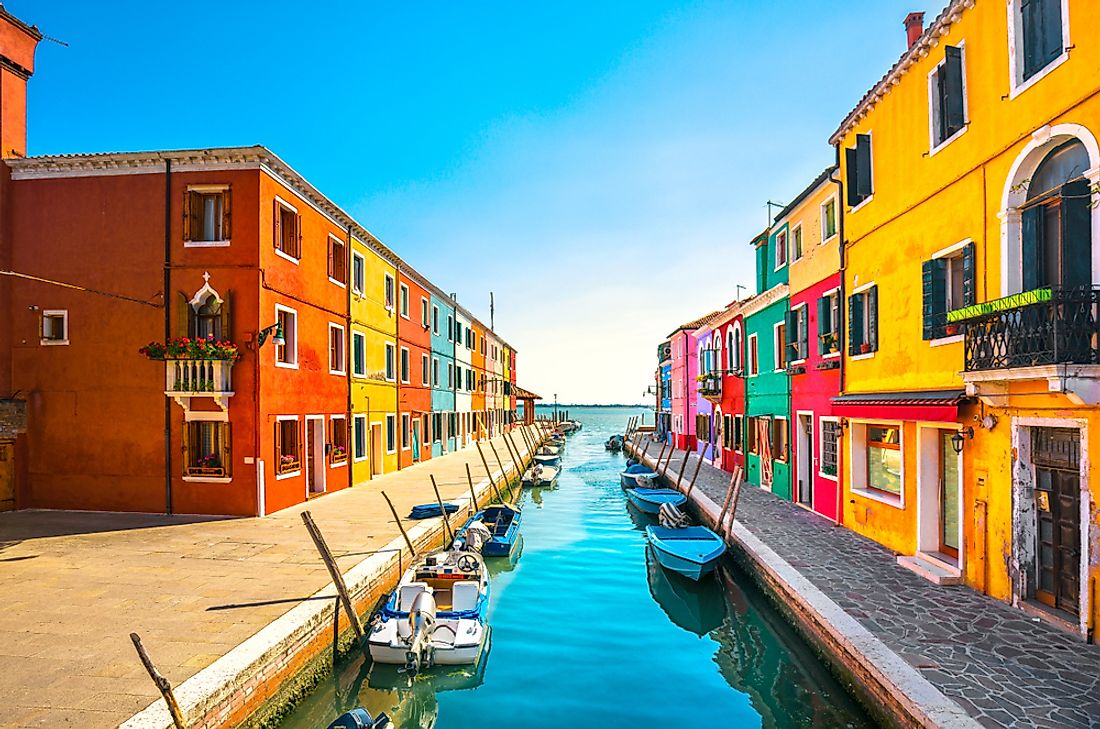
Burano is a small island located in the Venetian Lagoon in the northern side of Italy. The main reason why the island is so colorful is the large number of multicolored houses that stand on either side of the city’s canals. In addition to the picturesque scene created by the houses, the water in the canals is green, therefore producing a magical scene while reflecting the colorful houses.
The history of the island goes all the way back to the Roman era in the 6th century. Today, if one wishes to paint their house, then he or she must make a formal request to the authorities for direction on the color to paint based on the official color scheme.
13. Copenhagen, Denmark
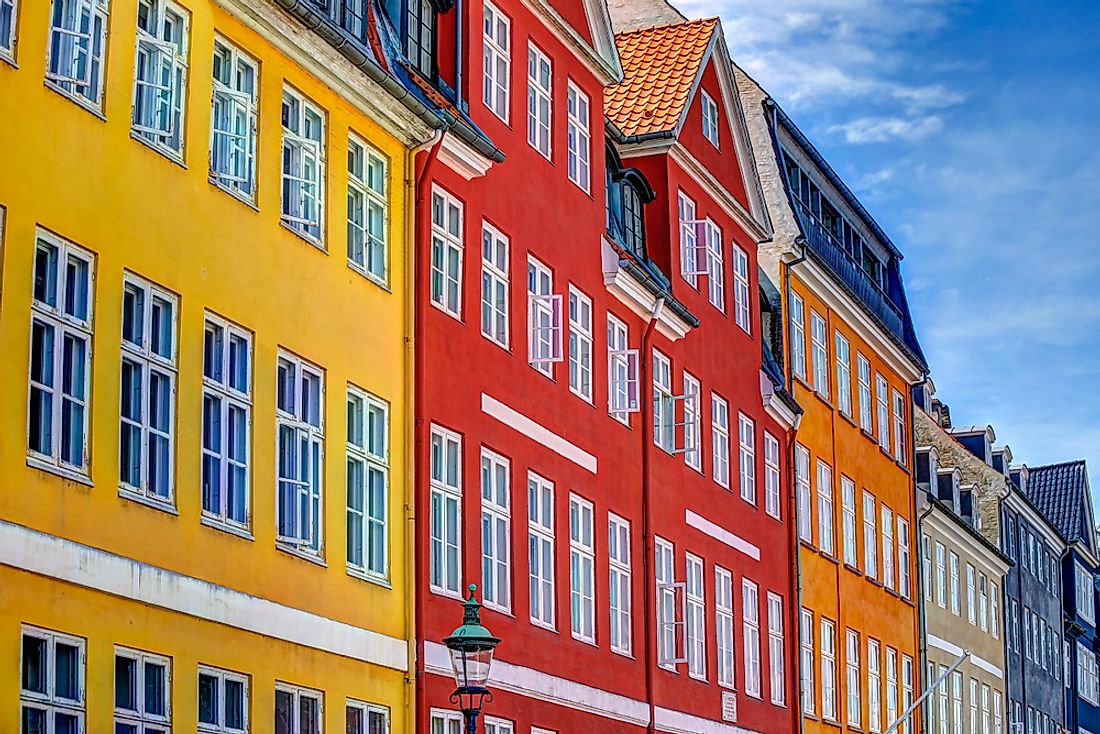
In Copenhagen, one of the most colorful paces is the harbor district of Nyhavn. The canal in the district is flanked on either side by colorful houses and occupied by a number of equally colorful wooden ships. These houses were erected back in the 17th and 18th centuries and are now mostly used as hotels. These beautiful houses have even managed to attract famous people such as author Hans Christian Anderson who lived in house number 20. The oldest house is house number nine after its construction in 1961. This ancient structure is still standing today in its initial form.
12. Menton, France
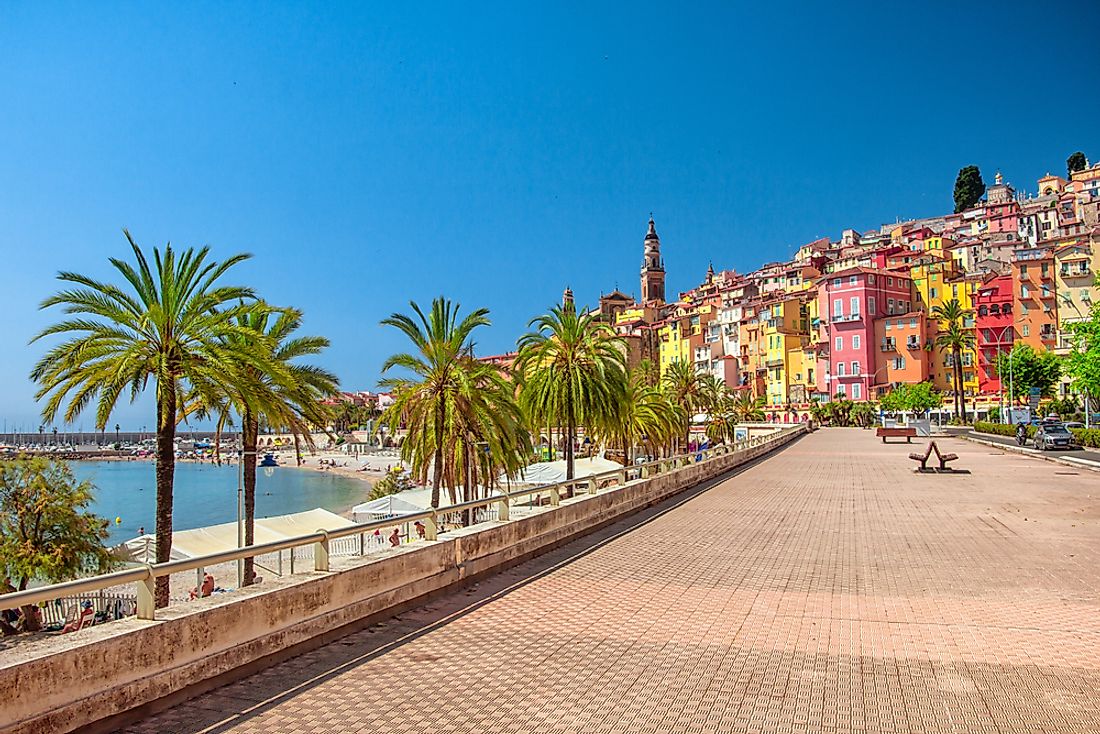
Nicknamed the "Pearl of France," Menton is French commune located in the Alpes-Maritimes department in the southeastern region of France. The townscape of the city is renowned for its gardens such as the Jardin Serre de la Madone and the Jardin botanique exotique de Menton. The latter was established all the way back in 1905. Together with lightly colored buildings, these gardens and structures contribute to the colorful nature of the beautiful city.
11. Chefchaouen, Morocco
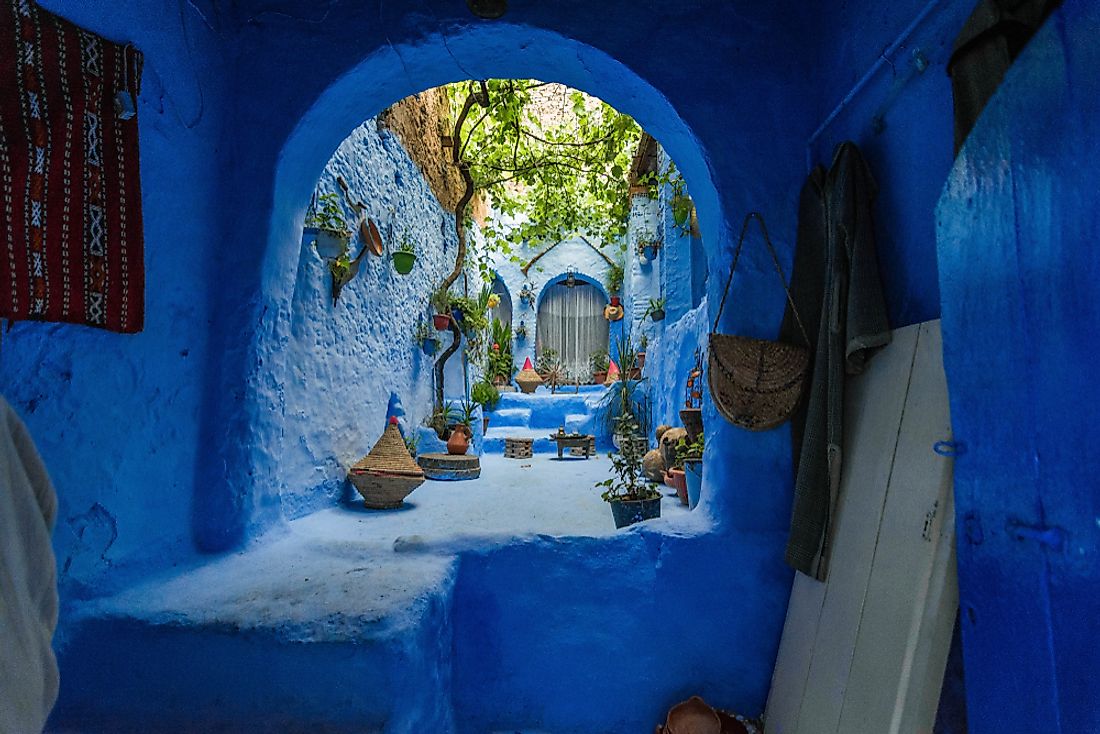
This small city is located in the Rif Mountains, which are located in the northwestern side of Morocco. After its founding in 1471, the city went on to become one of the most sought-after tourist attractions of the world after Jewish residents introduced the city’s bluish color scheme in 1930. Most of the buildings are awash in blue colors, which represented the sky as well as heaven. At different times of the day, the blue shade glows differently.
10. Guatape, Colombia
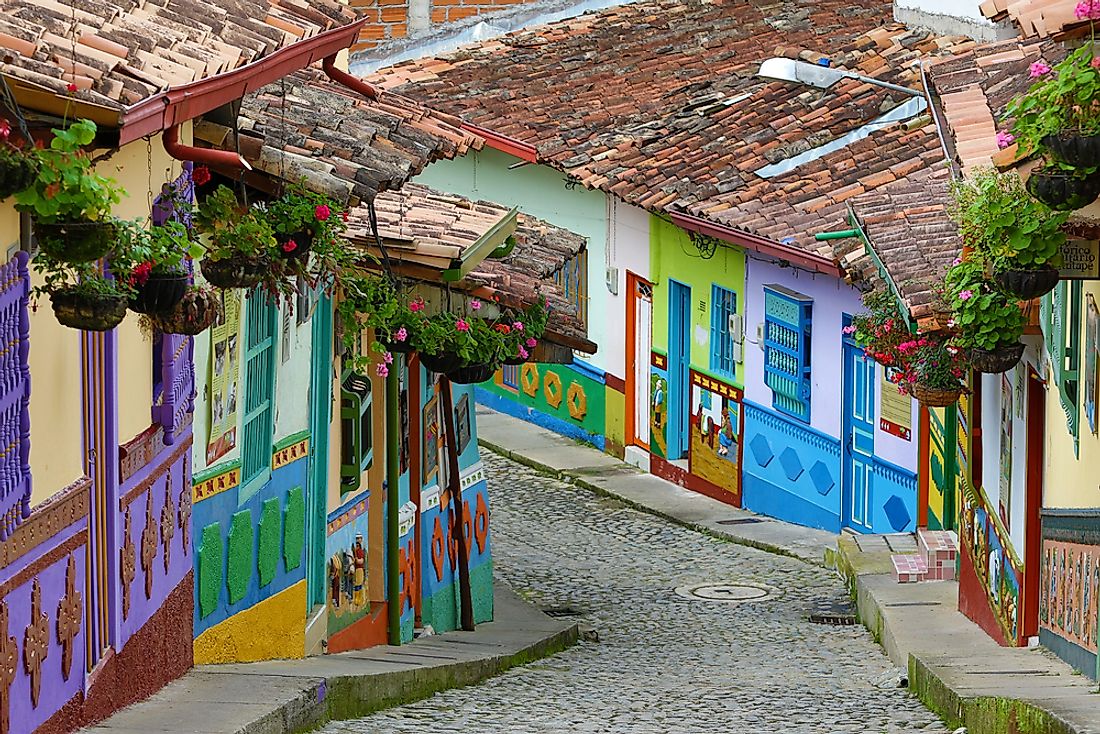
This town, which is also a municipality, is situated in Colombia’s Antioquia Department. Each of the buildings in the town has bright colored tiles that have representations of different things such as the products of the shops and the culture of the place. These depictions include things like people, animals, and general shapes. According to the history of the place, the tradition started out from a habit by homeowners to paint images on the sides of their houses. Aside from the color, tourists are also attracted by the incredible panoramic view provided from the top of a hill in the city
9. Puerto de la Cruz, Spain
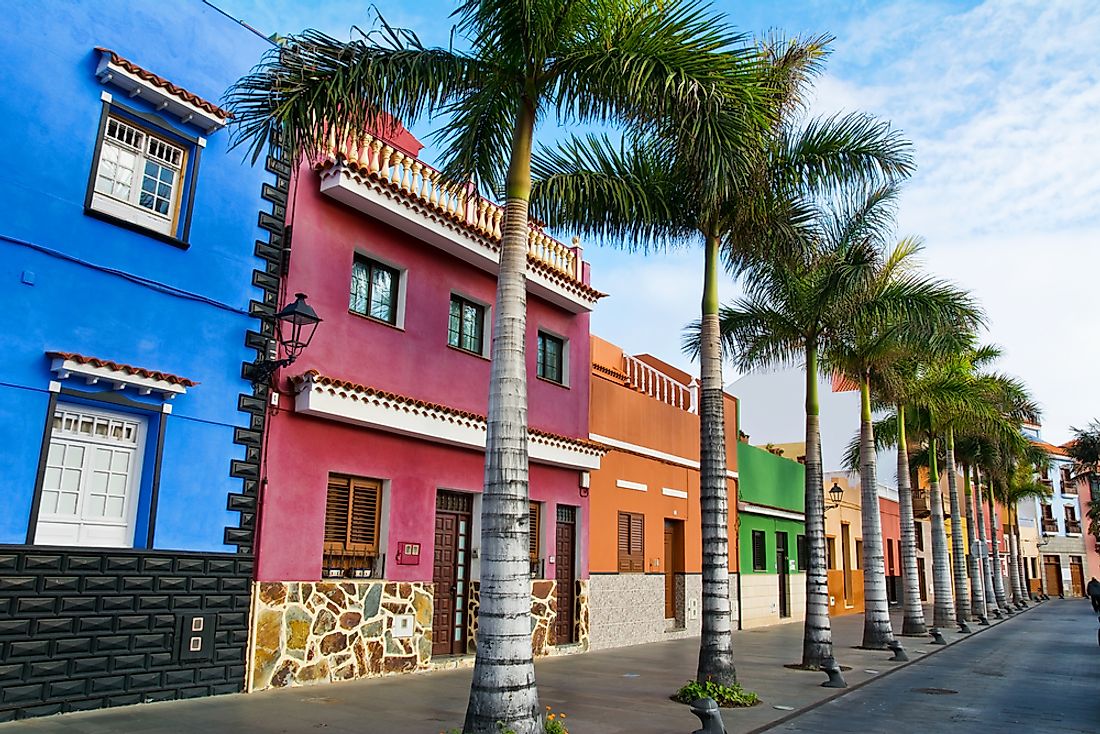
Also known as the “Port of the Cross,” this city is located in the northern region of Spain’s island of Tenerife. The city has a rich history that dates all the way back to the early stages of the 16th century and evolved to become a major tourist destination in the 1950s. Today, visitors are treated to sites such as the Martiánez Pools (Lago Martiánez), the Plaza del Charco, the Ermita de San Amaro, and plenty of other sites. The buildings are also painted in a variety of bright colors with the doors having small illustrations representing family nicknames and surnames.
8. Gamcheon Culture Village, South Korea
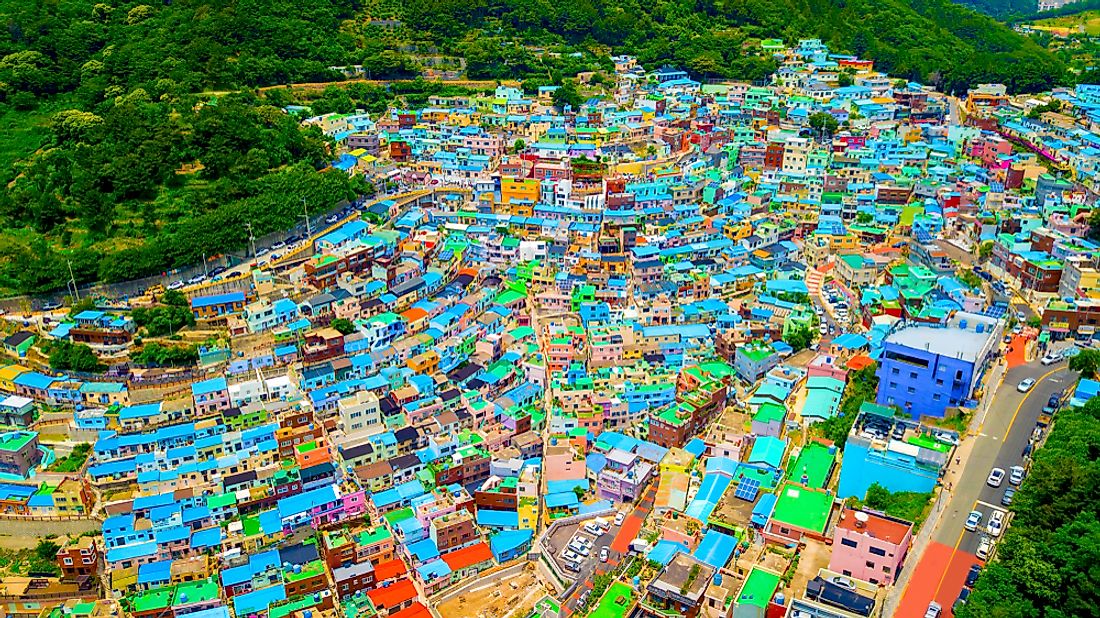
This culture village is located in the coastal city of Busan in South Korea. Interestingly, the culture village was once a dilapidated place that provided a haven for the refugees of the Korean War. However, in 2009, the government’s Ministry of Culture, Sports and Tourism came up with an initiative of invigorating the place by letting painters and artists work on the streets and buildings. The painters painted the village anew and placed works of art in different places. Using the theme, “Dreaming of Busan Machu Picchu,” these artists transformed the place into a unique marvel that is frequented by thousands of tourists.
7. Havana, Cuba
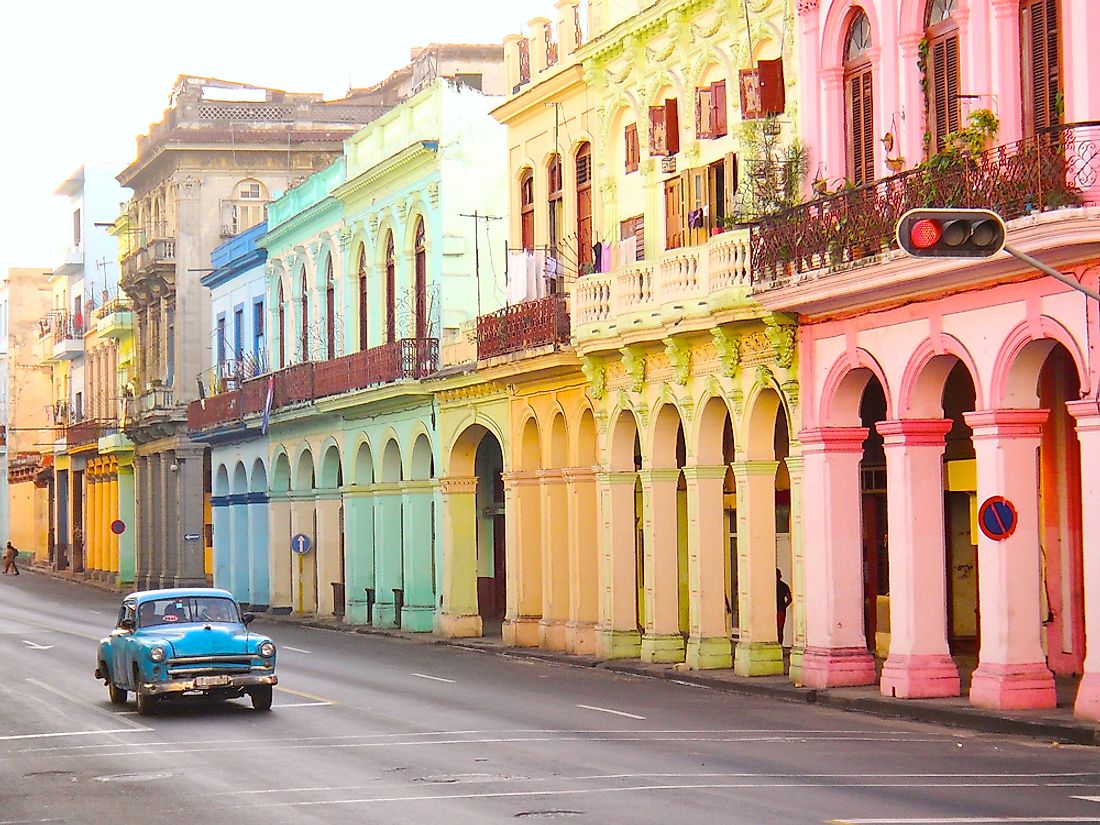
Havana is the largest as well as the capital city of Cuba. As of the last census, the city had about 2,106,146 people making it the most populated in Cuba. The colorful nature of the city comes from several things such as the history-rich Old Havana, which has some of the most ancient buildings as well as colorful buildings and cars. The city also has several attractions in their culture such as the popular salsa dance. In fact, due to its uniqueness, Havana became a UNESCO World Heritage Site back in 1982.
6. Varenna, Italy
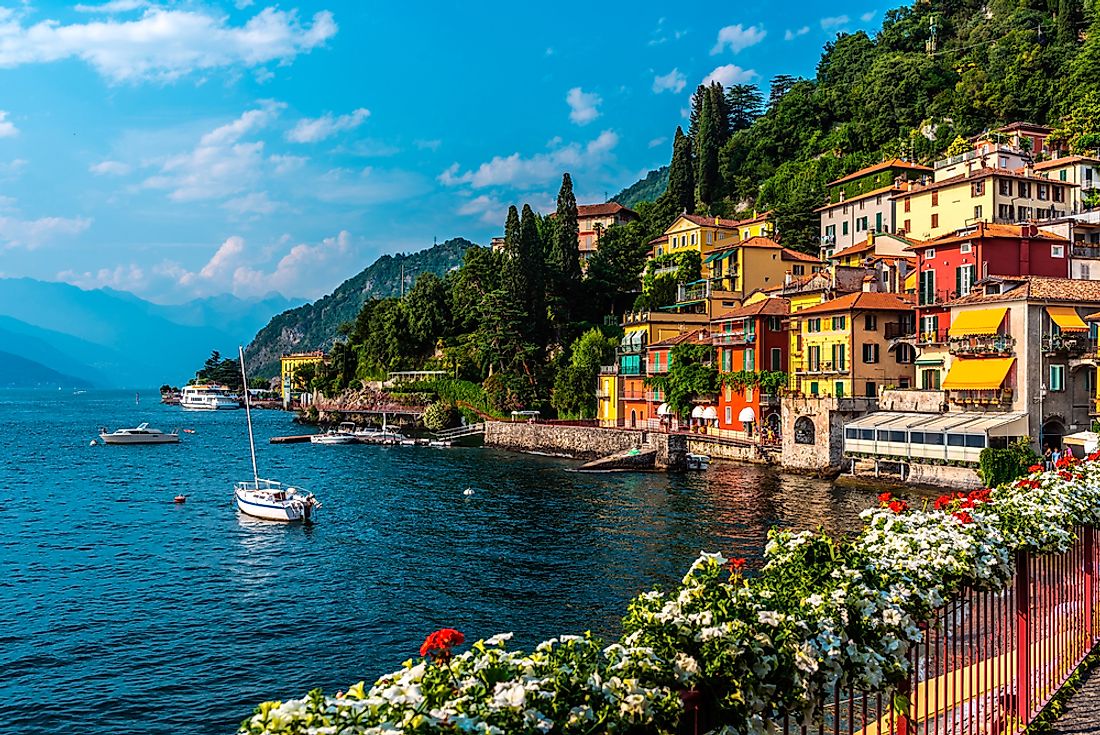
Varenna is a small town located around Lake Como in the province of Lecco, which is in turn located in Lombardy some 37 miles north of Milan. Founded back in 769, the city has some attractive sights such as the museum of the Castello di Vezio, the jaw-dropping gardens at Villa Monastero, and other sites. Seen from a ferry approaching the town, the view is spectacular as one is greeted by a sight of colorful houses in different colors such as bright red and bright yellow. Behind the town is an equally picturesque mountain full of green vegetation.
5. Colmar, France
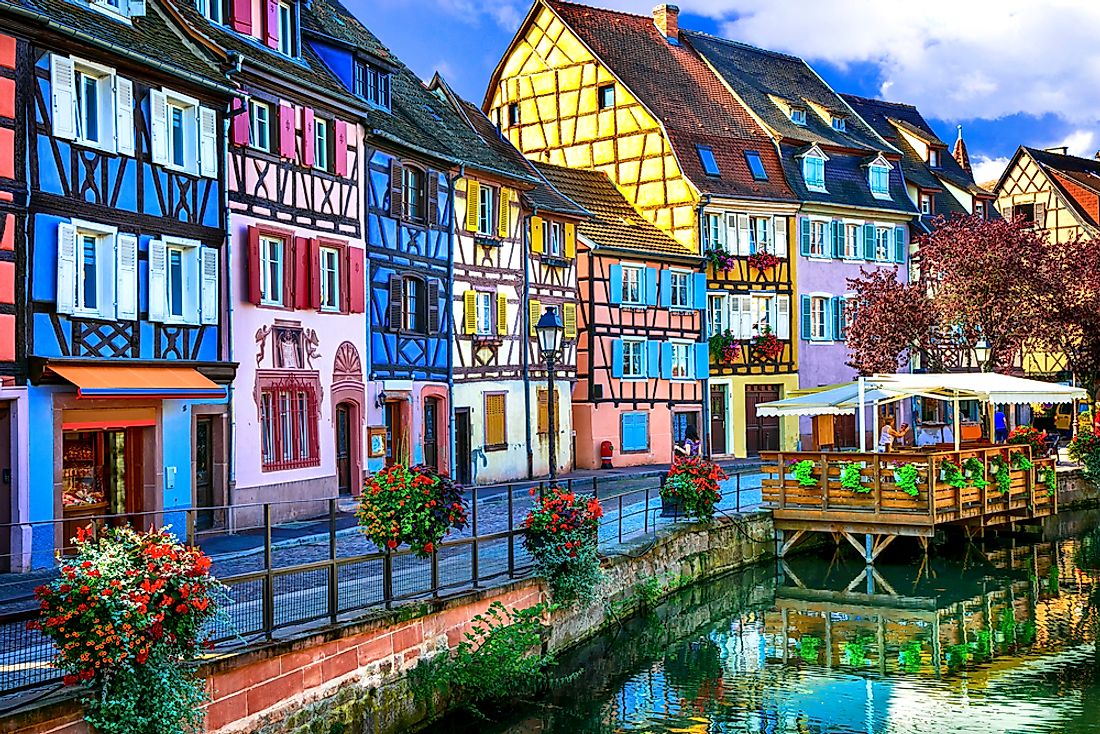
Colmar is a colorful commune located in the northeastern region of France in the Alsace region. The city is widely known for its ancient architecture, landmarks, and several museums such as the Unterlinden Museum. Victors are treated to various colorful sights such as the differently colored houses along the Rue De Les Poissonerie. In fact, a house on this street is painted differently from the adjacent house in order to preserve the colorfulness of the city. Houses are painted in several colors such as pink, yellow, green, blue, purple, and others. During holidays such as Easter, the houses are repainted to be even more colorful.
4. Guanajuato, Mexico
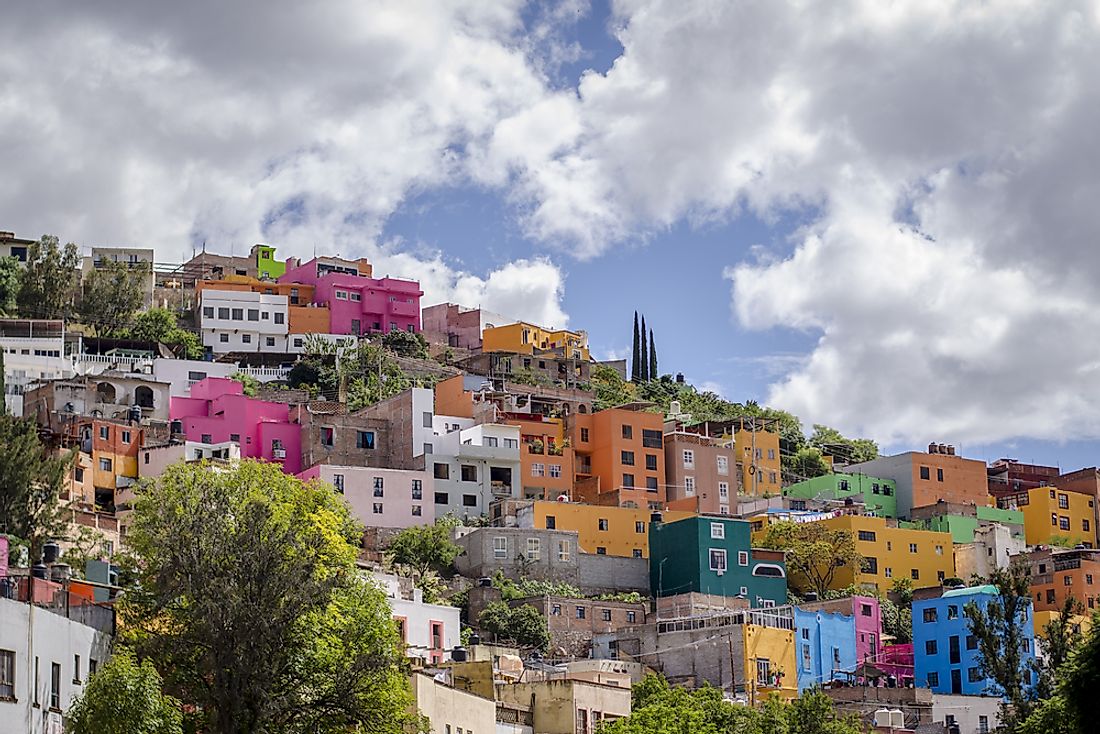
Guanajuato is found in central Mexico. Lying in a narrow valley, the streets of the city are narrow and winding. An aerial view of the municipality shows the city in all its colorful glory. Unlike most of the other colorful cities, there is no distinct pattern or plan to the painting as evidenced by the clashing colors of the houses. Some of the colors of the house include saffron yellow, lime green, and others.
3. St. John's, Canada
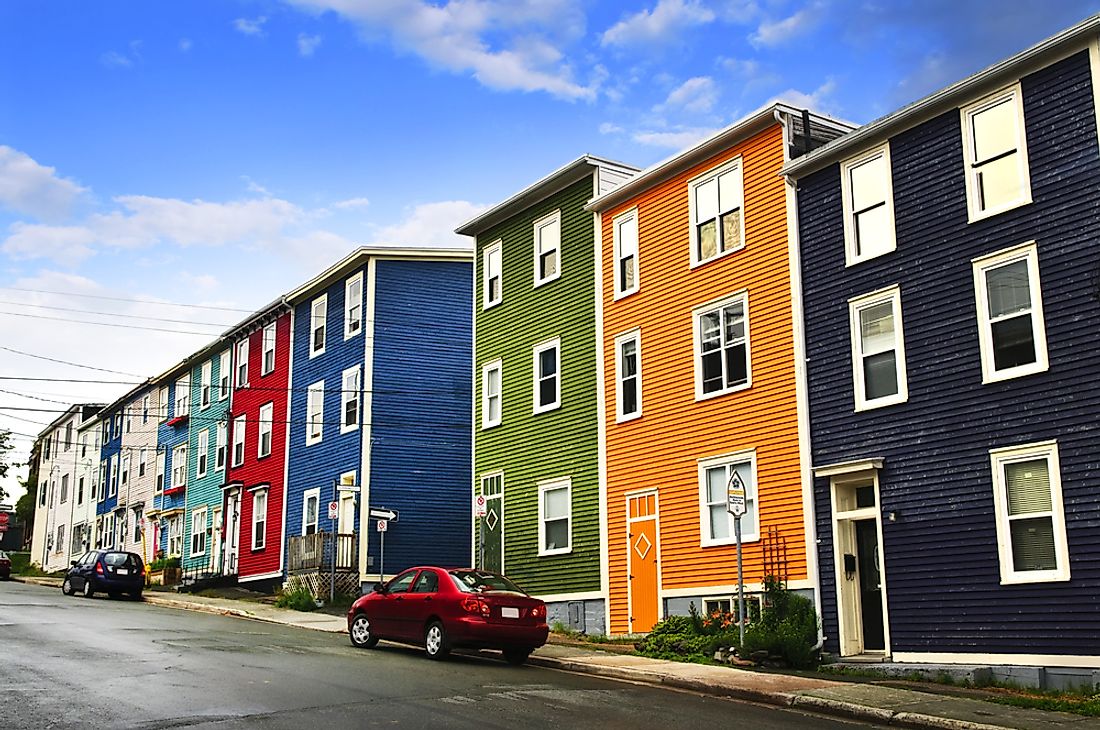
This port city in Canada is the oldest incorporated city in Canada after its incorporation back in 1785. The multicolored houses in the downtown area have been nicknamed “Jellybean Row.” People say that the houses have bright colors since the locals wanted to ensure that a happy mood was maintained even during seasons of gloomy weather. Each house has its own unique shade.
2. Longyearbyen, Norway
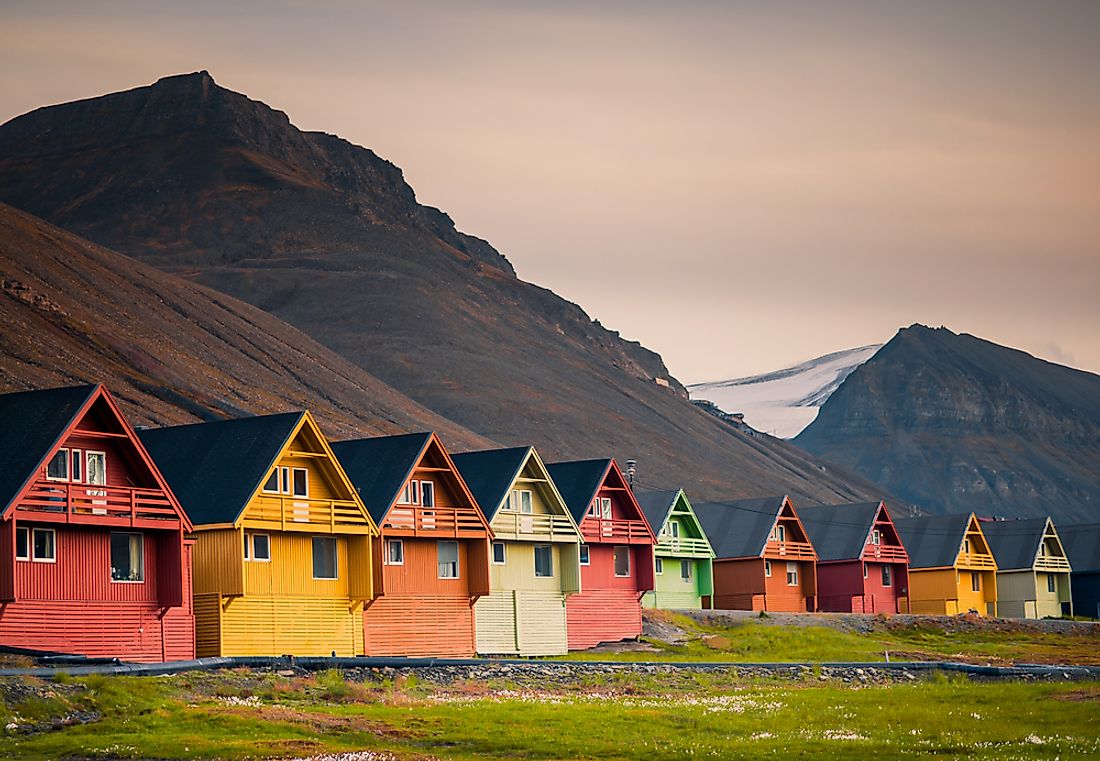
The town of Longyearbyen is found on the archipelago of Svalbard in Norway. Named in honor of John Longyear, the city also has a variety of wooden houses painted in a colorful manner. Due to the frozen ground, these houses are erected on top of piles and transportation is mainly through snow scooters. Accessing the city can be tricky since there are no good roads. As of 2015, the town had a population of 2,144 people from Norway, Thailand, Russia and a few other countries.
1. Jodhpur, India
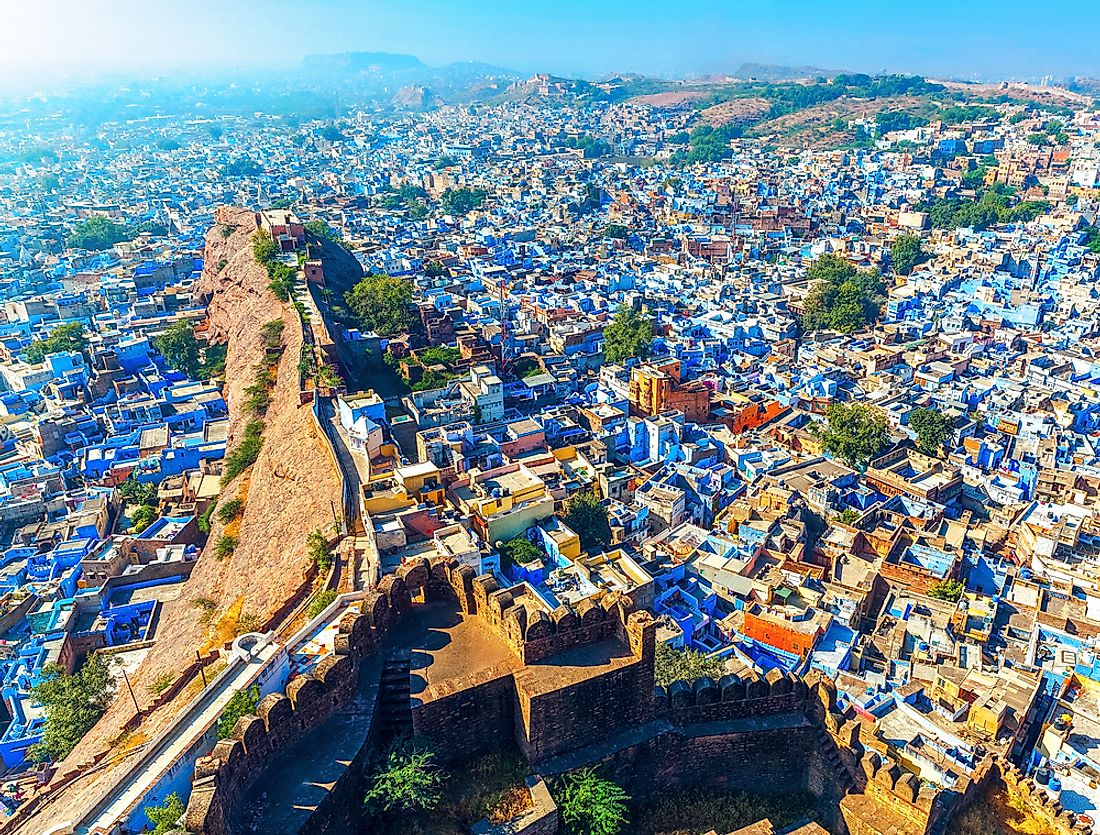
Nicknamed by the locals “The Blue City,” Jodhpur in India is Rajasthan’s second largest city. The city’s nickname stems from the bright blue paint of the houses, which surround the famous Mehrangarh fort in Jodhpur. The tradition of painting the houses the bright blue shade is said to come from the priestly class of the Brahmins to differentiate their houses from other castes. In addition, the color is believed to keep houses cool and keep away mosquitos.











